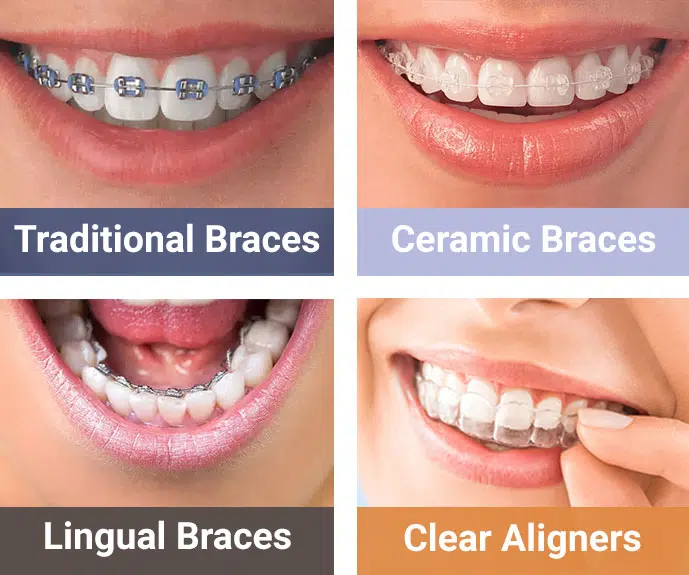Introduction
Braces are orthodontic devices used to correct misaligned teeth and jaws. They are commonly used to improve dental health and enhance the appearance of a person’s smile. This article will provide an in-depth look at the different types of braces, their costs, and what to expect during the treatment process.
Types of Braces
1. Traditional Metal Braces
Traditional metal braces are the most common type of braces. They consist of metal brackets that are bonded to the teeth and connected by wires. These braces are highly effective in correcting various dental issues and are suitable for patients of all ages.
2. Ceramic Braces
Ceramic braces are similar to traditional metal braces but use tooth-colored or clear brackets instead. This makes them less noticeable and more aesthetically pleasing. Ceramic braces are a popular choice for individuals who want a more discreet orthodontic treatment.
3. Lingual Braces
Lingual braces are placed on the backside of the teeth, making them virtually invisible from the front. They are custom-made to fit each patient’s teeth and provide effective treatment while remaining hidden. Lingual braces are a great option for individuals who desire a discreet orthodontic solution.
4. Invisalign
Invisalign is a popular alternative to traditional braces. It consists of a series of clear, removable aligners that gradually move the teeth into their desired position. Invisalign is virtually invisible and offers the flexibility of removing the aligners for eating and oral hygiene. However, it may not be suitable for complex orthodontic cases.
Costs of Braces
1. Traditional Metal Braces
The cost of traditional metal braces can vary depending on factors such as the severity of the dental issue, the duration of treatment, and the location of the dental clinic. On average, metal braces can cost between $3,000 and $7,000.
2. Ceramic Braces
Ceramic braces are generally more expensive than traditional metal braces due to their aesthetic appeal.
Summary:
Braces come in various types, including traditional metal braces, ceramic braces, lingual braces, and clear aligners. Each type has its own advantages and considerations, which we will explore in detail. The cost of braces can vary depending on factors such as the type of braces, the severity of the orthodontic issue, and the duration of treatment. We will discuss the average costs and potential financial options available. Additionally, we will provide insights into what to expect during the braces journey, including the initial consultation, the fitting process, regular adjustments, and oral care tips. By the end o best site f this blog post, you will have a comprehensive understanding of braces, enabling you to make informed decisions about your orthodontic treatment.
- What are the different types of braces?
- There are several types of braces available, including traditional metal braces, ceramic braces, lingual braces, and clear aligners.
- How much do braces cost?
- The cost of braces can vary depending on factors such as the type of braces, the duration of treatment, and the orthodontist’s fees. On average, braces can cost anywhere from $3,000 to $7,000.
- Do braces hurt?
- Braces may cause some discomfort or soreness initially and after adjustments. However, the pain is usually mild and can be managed with over-the-counter pain relievers.
- How long do I need to wear braces?
- The duration of wearing braces varies for each individual and depends on the complexity of the orthodontic issue. On average, braces are worn for about 1 to 3 years.
- Can I play sports or musical instruments with braces?
- Yes, you can still participate in sports and play musical instruments while wearing braces. It is recommended to wear a mouthguard during physical activities to protect your braces and teeth.
- How often do I need to visit the orthodontist during treatment?
- Typically, orthodontic appointments are scheduled every 4 to 8 weeks for adjustments and to monitor progress.
- How do I take care of my braces?
- Proper oral hygiene is essential when wearing braces. Brushing after every meal, flossing daily, and avoiding sticky and hard foods can help maintain braces and prevent oral health issues.
- Will I need to wear a retainer after braces?
- Yes, wearing a retainer is usually necessary after braces to ensure that your teeth remain in their new positions. The orthodontist will provide instructions on how often to wear the retainer.

Welcome to my website! My name is Tyson Schulz, and I am a dedicated and passionate professional Pediatric dentist. With years of experience in the field, I have had the privilege of helping countless children achieve and maintain healthy smiles.



